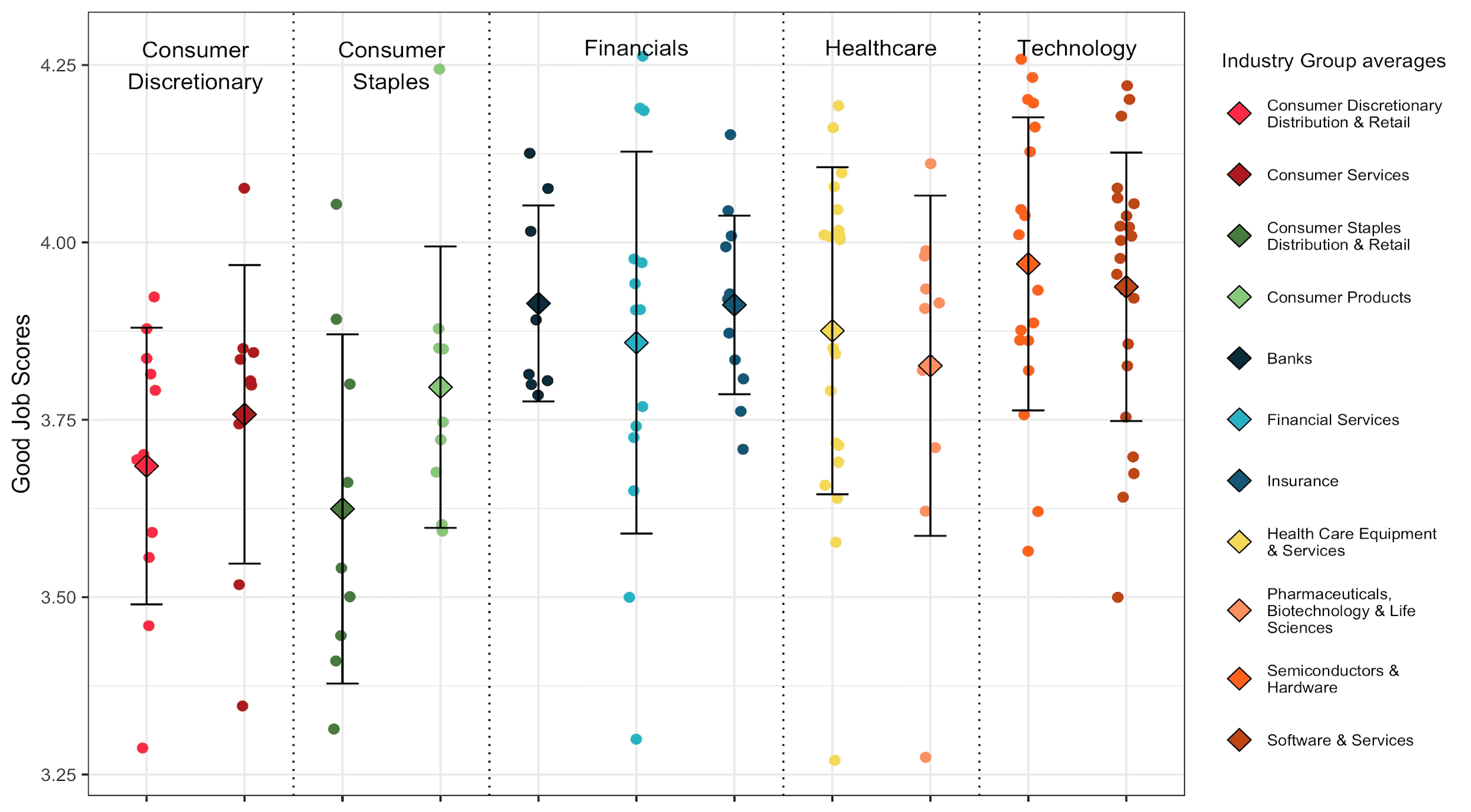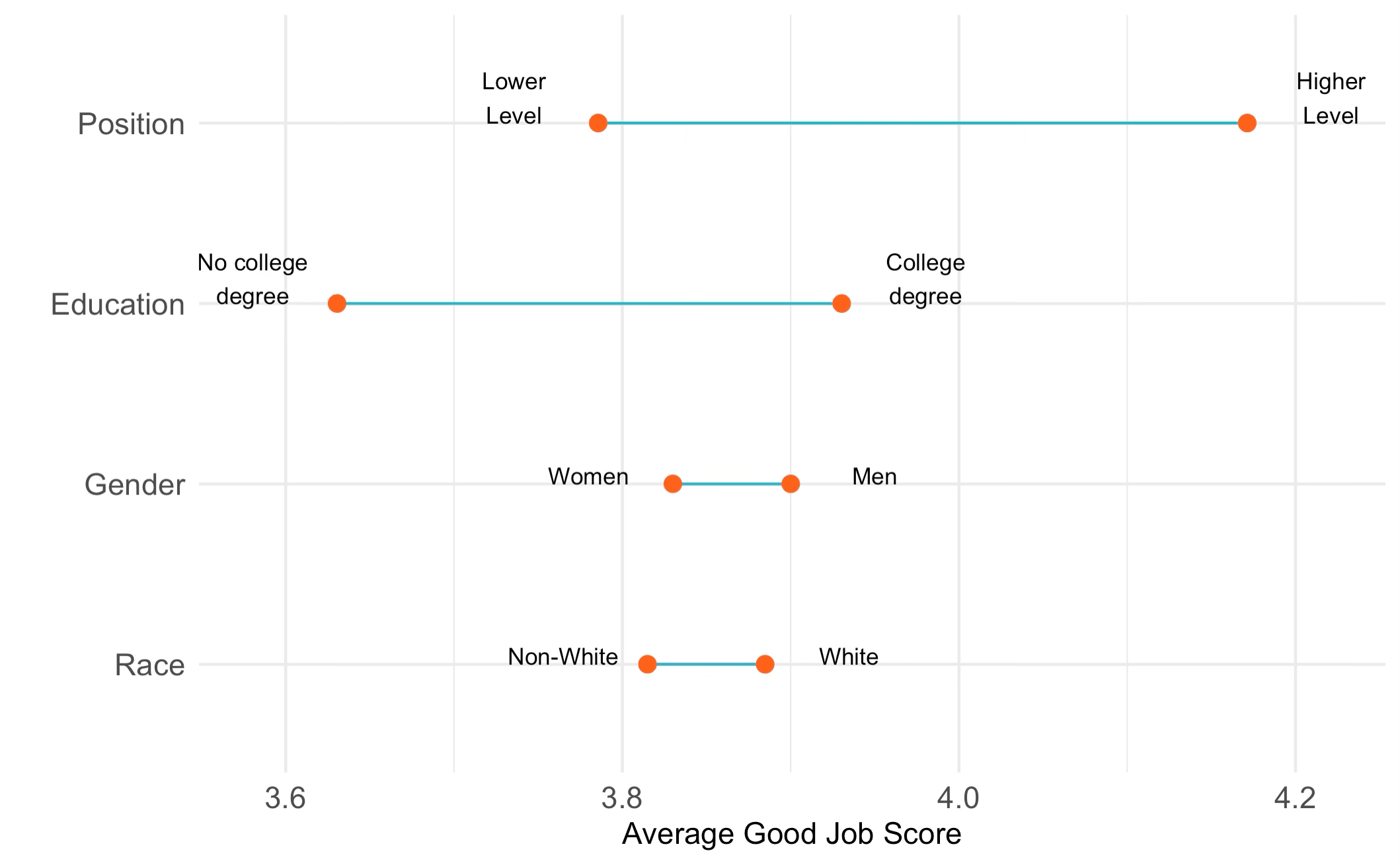After launching the Good Job Score (“GJS”) Assessment Tool – an open sourced, standardized instrument to help investors, management teams, and workers measure job quality – in April 2023, FoW Partners sought to improve the tool’s efficacy by expanding the dataset, enabling comparison across and within sectors and employee characteristics as well as validation of the relationship between the GJS and company performance.
FoW Partners has implemented the GJS Assessment Tool within its own portfolio and highlights two illustrative case studies for a private equity owner or business operator.
FoW Partners’ latest white paper is available for download here.
Comparison Across Sectors and Employee Characteristics
The second phase of research, conducted in late 2023, expanded the overall sample to 9,000 employees from 186 companies within the Russell 1000. The expanded dataset now enables comparison of scores across industry groups – for example, Technology having a higher median than Consumer Discretionary – as well as company comparisons within the most relevant industry groups.

In addition, the expanded dataset enables comparison of average GJS by employee characteristic, across position within the company, education level, gender and race, as illustrated below.

Validating Relationship Between the GJS and Company Performance
The second phase of research also focused on developing a more robust understanding of the correlations between GJS and company financials. Overall, we observed a positive relationship between the GJS and company financials. Companies in the top 20% quantile based on their GJS outperformed companies in the bottom 20% quantile across key financial metrics such as EBITDA margins (~1.8x higher) and operating cash flow margins (~1.8x higher)1.
The GJS in Practice: Lessons from FoW Partners
The GJS Assessment Tool was designed for practical application and FoW Partners has been utilizing the GJS Assessment Tool across its portfolio. Two illustrative case studies highlight this use in practice:
- Ongoing portfolio / company governance, to help identify opportunities to improve job quality and business performance; and
- During due diligence, to help screen investment opportunities based on GJS performance relative to industry samples.
To learn more
- Visit goodjobscore.com to better understand the GJS methodology and scoring, or to begin implementing the GJS at your company.
- Download The Good Job Score Assessment Tool in Practice (December 2024)
- Download Introducing the Good Job Score Assessment Tool (April 2023)
1 See The Good Job Score Assessment Tool in Practice (December 2024).
